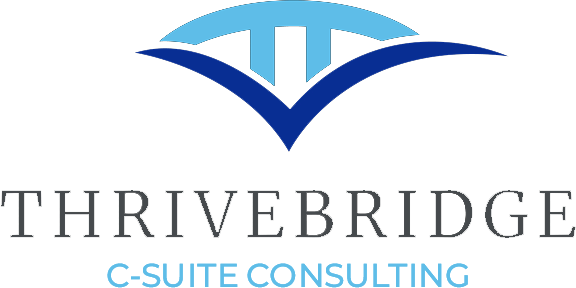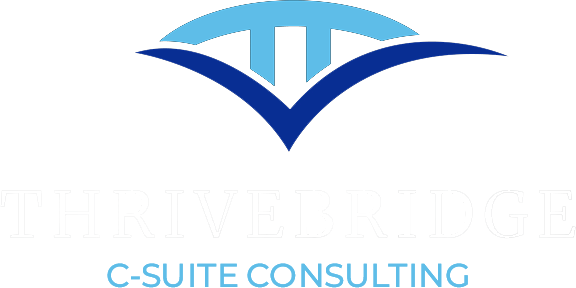Public-facing institutions—from universities and hospitals to government agencies—are under unprecedented strain. Workforce burnout, disengagement, and leadership attrition are converging with rising service expectations and tightening fiscal conditions. Amid this complexity, one truth is becoming increasingly clear: strategy alone is no longer enough. Institutions must invest in people—not just as a moral imperative, but as a business-critical priority.
At ThriveBridge C-Suite Consulting, we believe that people strategy is not the sole domain of human resources. It is a leadership mandate. And in this moment, it may be the most important differentiator of institutional performance.
Beyond Policy: Culture as a Strategic Asset
People-first strategy begins with the recognition that culture—how people work, lead, and relate—is the invisible engine behind execution. Many institutions have ambitious strategic plans but lack the internal capacity to deliver on them. Misaligned leadership, siloed teams, and low morale create bottlenecks that no amount of compliance training can solve.
What’s needed is not just another initiative, but an integrated cultural reset—one that begins at the top. We work shoulder-to-shoulder with superintendents, hospital CEOs, and department directors to realign purpose with practice. That means defining core behaviors, clarifying expectations, and ensuring leaders model the very values they aim to scale.
The Cost of Disengagement
In a recent ThriveBridge engagement with a regional university, staff turnover among frontline teams had reached 36%, costing millions annually in onboarding and institutional memory loss. Our work uncovered not just workload issues—but a widespread breakdown in communication, trust, and role clarity.
This is not an isolated case. Research consistently links disengagement to poor supervisory relationships and lack of recognition—not to pay alone. C-suite leaders must take responsibility for cascading healthy leadership practices throughout the organization. That means equipping middle managers with the tools to coach, support, and retain their teams.
Preparing for Succession—Not Crisis
Another silent threat facing institutions is the widening leadership gap. With waves of retirements and shifting career trends, too many organizations are left scrambling when key positions are vacated. A people-first strategy doesn’t just address today’s workforce—it anticipates tomorrow’s.
Through embedded coaching, succession mapping, and leadership cohort development, ThriveBridge helps clients build internal pipelines of prepared, purpose-driven leaders. The result isn’t just continuity—it’s confidence in the future.
People Strategy Is Performance Strategy
Institutions cannot afford to treat people strategy as ancillary. It is the foundation of performance, execution, and stakeholder trust. When people are aligned, supported, and inspired, everything changes—engagement improves, service quality rises, and transformation becomes sustainable.
In every engagement, we bring this perspective to bear—customizing systems, coaching teams, and embedding practices that make people strategy a core competency at every level.
The Path Forward
The institutions that thrive in the coming years will not be those with the flashiest plans, but those with the strongest people infrastructure. At ThriveBridge, we help leaders close the gap between vision and reality—by starting with the people who carry it out.
Because systems don’t succeed—people do.

